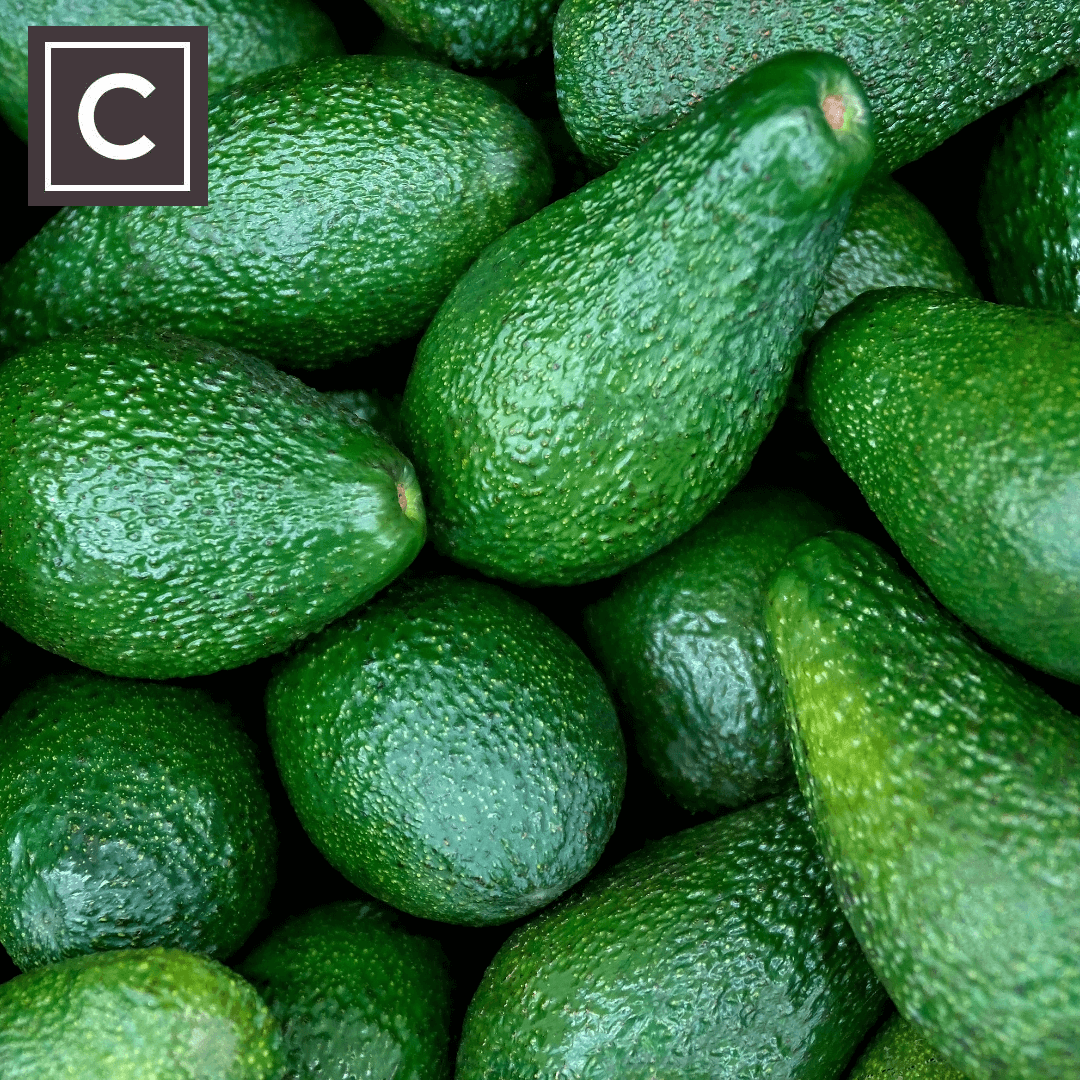Ingredient Glossary: Avocado
Posted by Emily on 1st Dec 2019 Reading Time:
What is an Avocado?
Although technically classified as a fruit, the mildly flavoured avocado is more commonly used as a vegetable. Originating from Central America, the primary types include the Hass, recognised for its dark, knobbly skin; the pear-shaped, smooth-skinned Ettinger and Fuerte (which also comes in a miniature size); and the more rounded Nabal. The avocado is also referred to as a butter pear, owing to its creamy texture, or as an alligator pear due to the textured skin of the Hass variety. Notably nutritious, it contains vitamin E, iron, potassium, and niacin and is unique among fruits for its oil content - predominantly the healthier monounsaturated variety. Consult our guide for more on the health benefits of avocados.
When Are Avocados in Season?
Available throughout the year.
Shopping & Storage
A ripe avocado should yield slightly under pressure but should not feel overly soft. A firm press with your fingers should leave an impression in the flesh. The skin should appear dark brown and pebbly for the most commonly found Hass variety, not green. Seasonal varieties like the smooth-skinned, crisp-fleshed Fuerte may be bright green when ripe.
Store unripe avocados at room temperature in a fruit basket until fully ripe. To expedite ripening, place them in a brown paper bag to concentrate the ethylene gas they naturally emit, which triggers ripening. Adding a banana or an apple to the bag will also hasten the process, as these fruits also produce ethylene.
Once ripened, avocados should be consumed immediately but can be kept in the fridge temporarily. Allow the fruit to reach room temperature before eating (unless you prefer your avocados chilled, you oddball).
Once cut, the flesh will oxidise and darken quickly. To prevent this, place the cut side on a plate with a thin layer of oil and store it in the fridge.
There is no foolproof method for keeping guacamole from discolouring rapidly. (The old "leave the stone in the bowl" trick is a myth.) Your best bet is to use a triple layer of cling film pressed directly onto the surface to form a 'skin'. Treated in this manner, it should remain green for a few hours. Stir discoloured areas back into the mix just before serving, and no one will be the wiser.
How to Cut an Avocado Safely
Reports from A&E departments suggest that accidents while cutting avocados are common. However, cutting an avocado safely is straightforward if you follow these steps.
Step 1: Remove the Stem Piece
First, look for a small woody bit at the stem end. If present, remove it with your fingers.
Step 2: Halve the Avocado
Utilising a small knife, slice until you hit the stone in the avocado's centre. Carefully rotate the avocado, maintaining contact with the stone, to complete the cut.
Step 3: Separate the Halves
Twist the avocado halves to detach them, leaving the stone in one half.
Step 4: Remove the Stone Carefully
This step requires caution. Using a sturdy knife's heel, gently tap into the stone to embed it, then twist the knife to remove the stone. A couple of taps against the edge of a waste bin should dislodge the stone.
Step 5: Slice or Dice the Flesh
Place the halves on a chopping board. With a small knife, slice the flesh without cutting through the skin. To dice, rotate 90° and cross-cut.
Step 6: Scoop Out the Flesh
Employ a large spoon to scoop out the avocado flesh, keeping the spoon close to the skin for maximum yield.
Storage Instructions for Avocados
Once ripe, store them in the fridge.



